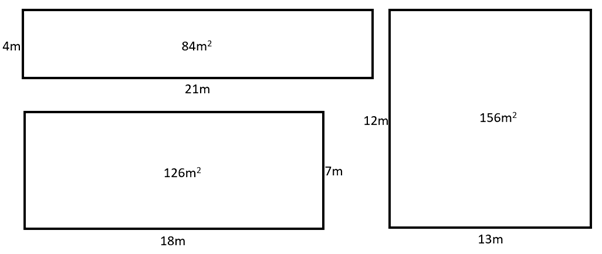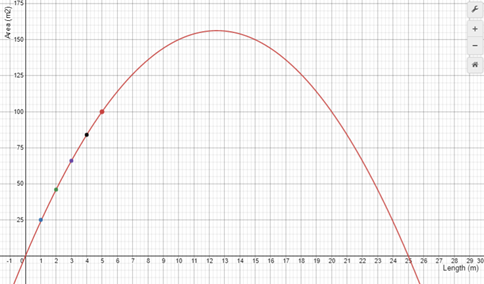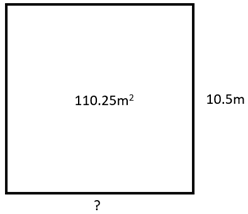The purpose of this activity is to support students in measuring the areas and perimeters of a rectangle when the side lengths are given in decimal measurements.
- Rulers
- Squared paper photocopied
- 1B5 exercise book
- Calculators
- Remind students how the area and perimeter of a rectangle can be found using the side lengths. Use a 1B5 exercise book is possible, these usually measure 25.5cm x 29.5cm. Present the scenario of the cost of plastic book covers being based on area.
What is the area of a 1B5 exercise book? (25.5 x 29.5 = 752.25cm2)
What is the perimeter of the double page cover (opened out)? (2 x (51 + 29.5) = 169cm).
- Provide the students with a variety of books from the book corner or library. Alternatively, you might investigate the sizes of the different exercise books students use in school.
Imagine you are making plastic covers for these books. (You might show videos of covering exercise books if students are unfamiliar).
What area of plastic cover will you need for each book?. Allow for the extra that overlaps the edges. Be as accurate as you can.
- Let the students work in pairs to calculate areas and perimeters. Organise students in pairs that will encourage peer scaffolding and extension, as well as productive learning conversations. Roam as they work and look for students to:
- measure decimals in numbers of centimetres. They may use millimetres and convert those measures to centimetres.
- use multiplication with a calculator to find the areas and perimeters.
- express the measures using correct numbers and units, such as 624.6cm2 for area and 121.8cm for perimeter.
- Throughout the investigation, gather the students to discuss important points, or ask students to discuss the points in pairs. above or discuss the same idea with pairs. Points might include:
Why do you think book sizes are similar?
What is the maximum area for a book to be ‘lap friendly’ or ‘shared book friendly’?
Does cutting the corners off the rectangle of wrap increase or decrease the perimeter?
You might introduce relevant te reo Māori kupu such as roa (length), tapawhā hāngai (rectangle), paenga (perimeter), and horahanga (area).
Next steps
- Explore maximisation and minimisation problems. For example, Henny has a 50m roll of chicken wire to make a rectangular run for her chickens. Which rectangle has the greatest area? Consider how digital technology could be used to represent problems.
Students might recognise that whilst the perimeter cannot exceed 50m, the side lengths can vary. The area is to be maximised. Some examples of runs with calculated areas are shown below:

Students might organise their findings into a table or spreadsheet to look for patterns:
Length (m) Width (m) Area (m2) 1 24 24 2 23 46 3 22 66 4 21 84 5 20 100 Students might also graph the relation between length and area when perimeter is fixed. First plot order pairs like (1,24), (2,46), (3,66) etc. then look for a pattern by drawing a curve through the points:

Students should notice that area peaks between lengths of 12 and 13. Investigate lengths between 12 and 13 that are decimals, such as 12.3m x 12.7m.
Area is maximised when the rectangle is 12.5m x 12.5m. Note that 12.52 = 156.25m2, and √156.25 = 12.5.- Solve problems where the perimeter or area are given, but a side length or both side lengths are missing. Make the areas decimal amounts. For example:
